6.02.2019
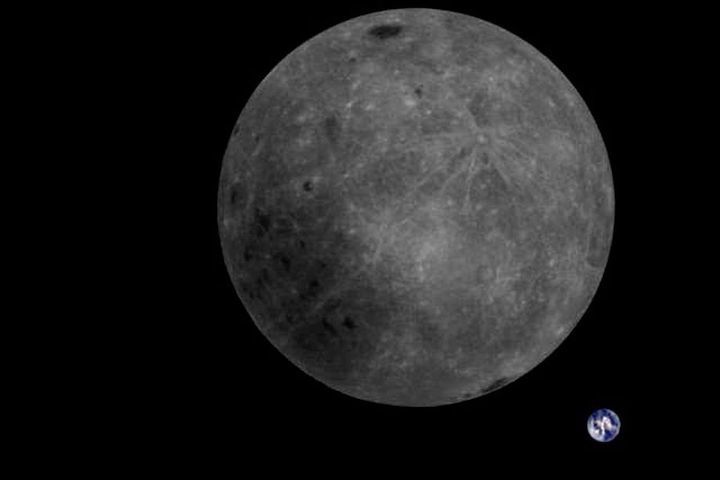
Image: Dwingeloo Radio Observatory
A Chinese satellite currently in lunar orbit snapped this incredible image of the far side of the Moon, with a tiny Earth hanging out in the background. Captured on February 3rd, the picture offers a rare perspective of the Earth and Moon system together.
The image was taken by China’s Longjiang-2 satellite, which entered the Moon’s orbit in June 2018. This tiny probe was launched into space along with China’s Queqiao satellite, a communications probe that’s been critical for the country’s recent Chang’e-4 lunar lander. At the beginning of the year, Chang’e-4 successfully touched down on the far side of the Moon — the side that’s always facing away from Earth. Queqiao is located in a stable position near the Moon, where it relays radio signals from Longjiang-2 and the Chang’e-4 lander to Earth.
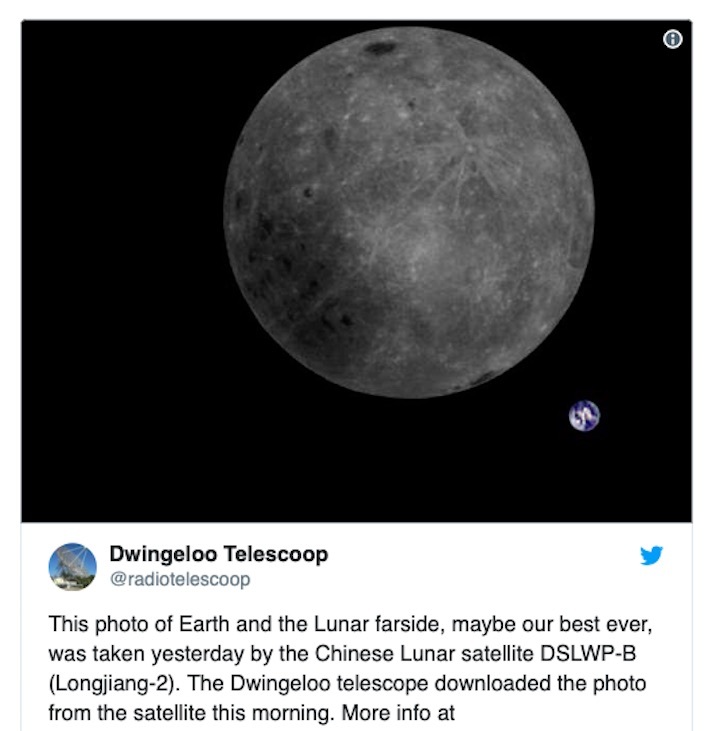
Longjiang-2 actually had a companion satellite, Longjiang-1, and both were tasked with orbiting and observing the Moon. But China ultimately lost contact with Longjiang-1 en route. Luckily, Longjiang-2 was a success, and it took some stunning pictures last fall.
During the Chang’e-4 landing, the satellite was silent so that it wouldn’t interfere with communications between the Earth and the lander. But Longjiang-2 is active again. The probe started taking a time-lapse of the Earth-Moon system on February 3rd, and the first photo of that sequence was downloaded by the Dwingeloo Radio Observatory in the Netherlands yesterday.
This is the first time that Longjiang-2 has captured the entire Moon and Earth in one shot. Now that it’s taking pics again, hopefully there are even more stunning images to come.
Quelle: The Verge
+++
Our precious Earth and the lunar far side
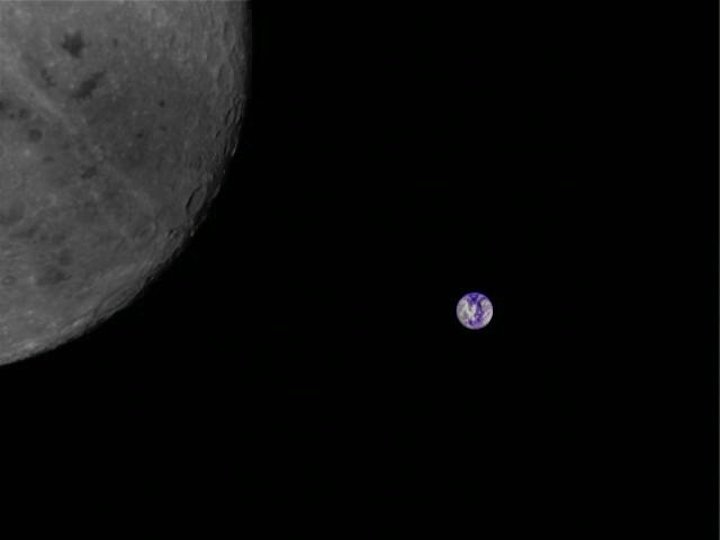
Far side of the Moon photographed by amateurs
This image shows the far side of the Moon, as well as our own planet Earth. It was taken with a camera linked to an amateur radio transceiver on board the Chinese DSLWP-B / Longjiang-2 satellite (call sign BJ1SN), currently in orbit around the Moon, and transmitted back to Earth where it was received with the Dwingeloo Telescope.
This image represents the culmination of several observing sessions spread over the past few months where we used the Dwingeloo telescope in collaboration with the Chinese team from Harbin University of Technology, who build the radio transceiver on board Longjiang-2, and radio amateurs spread across the globe.
During these sessions we tested receiving telemetry through low-bit rate and error-resistant digitally modulated transmissions, as well as the JT4G modulation
scheme designed by radio amateur and Nobel prize winning astrophysicist Joe Taylor (K1JT) for weak signal Moon bounce experiments. Besides telemetry, we performed a VLBI experiment by simultaneously observing Longjiang-2 from China and Dwingeloo, and also downloaded images taken by Longjiang-2 of the lunar surface, lens flares, and the starry sky as seen from lunar orbit.
The transceiver on board Longjiang-2 was designed to allow radio amateurs to downlink telemetry and relay messages through a satellite in lunar orbit, as well as command it to take and downlink images. In that it has succeeded, as many radio amateurs have received telemetry and image data. Being able to use the Dwingeloo telescope to help with this has been a lot of fun.
This full color adjusted image is received by radio amateurs, including the radio amateurs of the Dwingeloo Radio Telescope (PI9CAM) operated by Tammo Jan Dijkema and myself. Commands were created by MingChuan Wei (BG2BHC) and uplinked by Reinhard Kuehn (DK5LA). The color correction of the image is done by Wei.
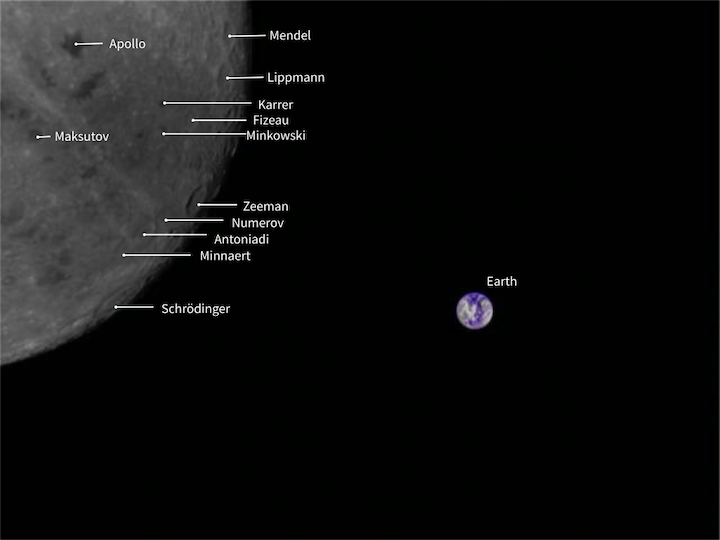
The annotated picture with names of Moon craters is made by Tammo Jan. Note that the crater Minnaert is named after the Dutch astronomer Marcel Minnaert. Minnaert was member of the SRZM board in the time the Dwingeloo Radio Telescope was designed and build.
Addendum after October 12, 2018
Below are two other images, also slightly color corrected. The original images are here. The third image shows the Moon clearly seen from Dwingeloo Radio Telescope through the window of the observation room and the metal mesh of the mirror.
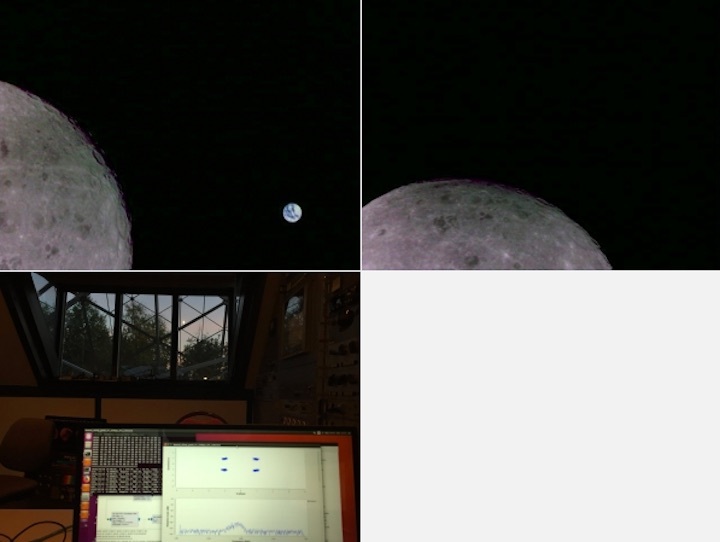
The animation below shows the Moon as seen from the DSLWP-B satellite as it orbits around the Moon. The animation pictures were taken on October 15. Data for the animation was collected by Cees Bassa and Tammo Jan Dijkema in the Dwingeloo Telescope (PI9CAM), by Imants Tukleris (YL3CT), Mike Rupprecht (DK3WN), and Dimitry Borzenko (4Z5CP). The satellite was commanded by Reinhard Kuehn (DK5LA).
Quelle: Dwingeloo Radio Telescope - C.A. Muller Radio Astronomy Station - PI9CAM
